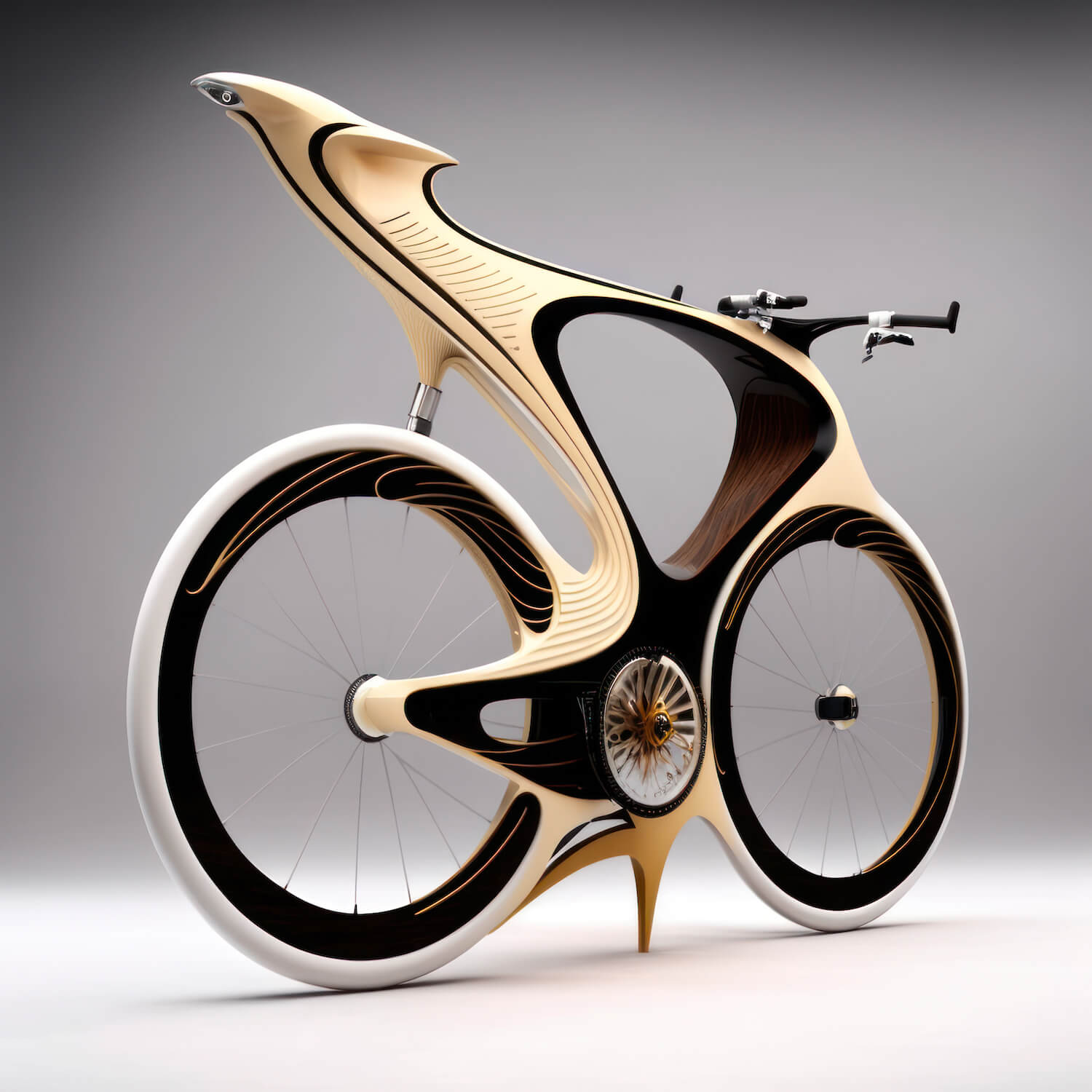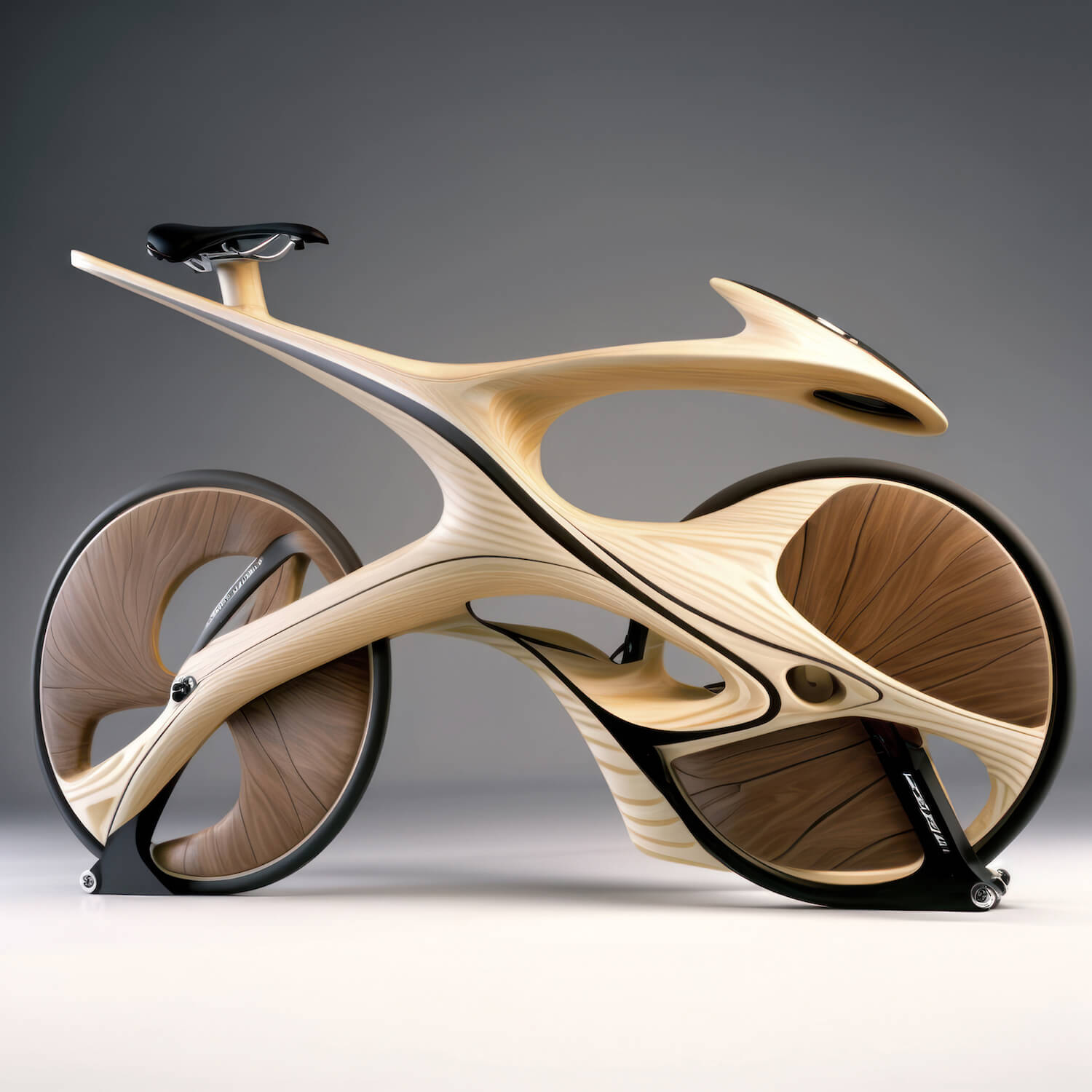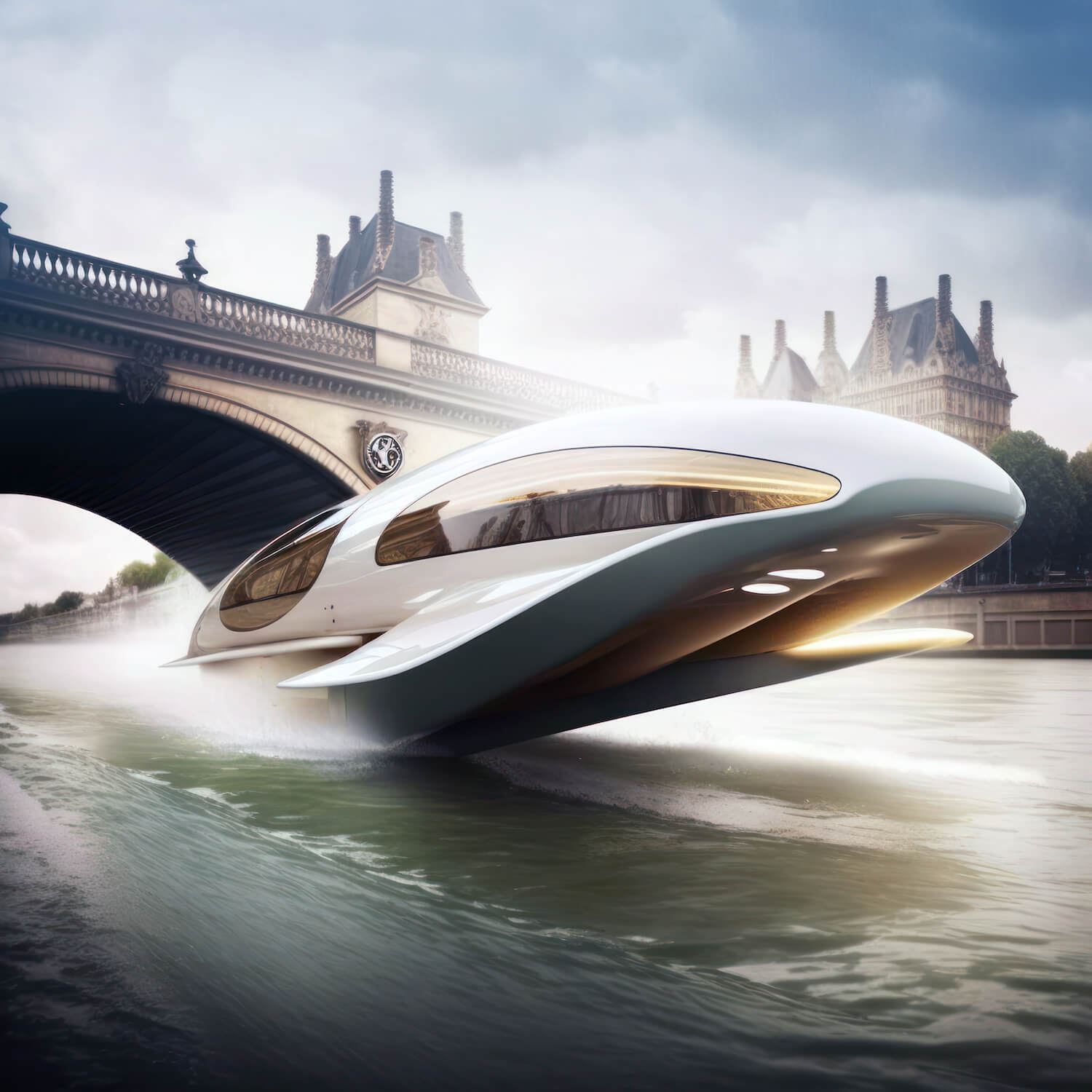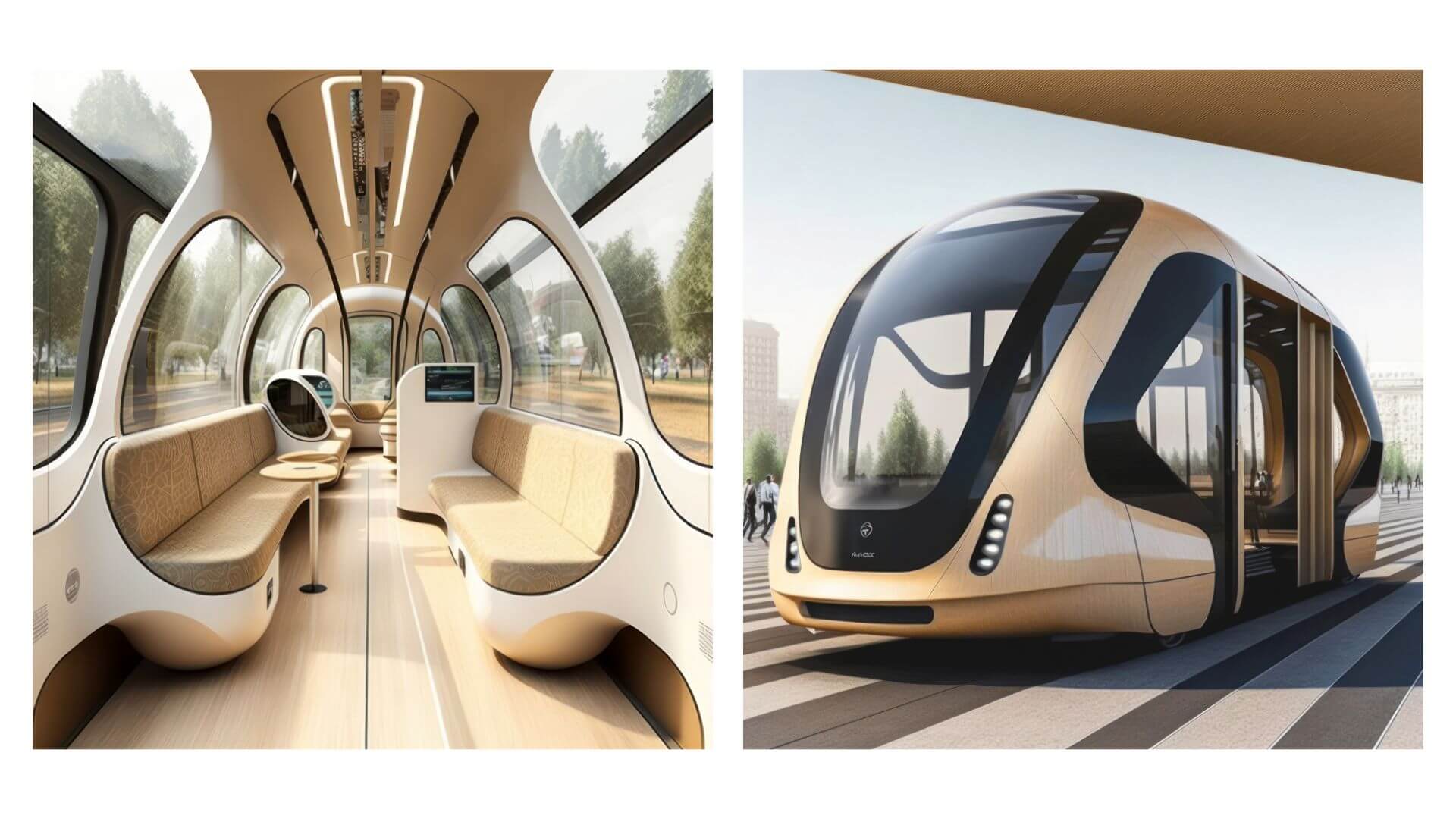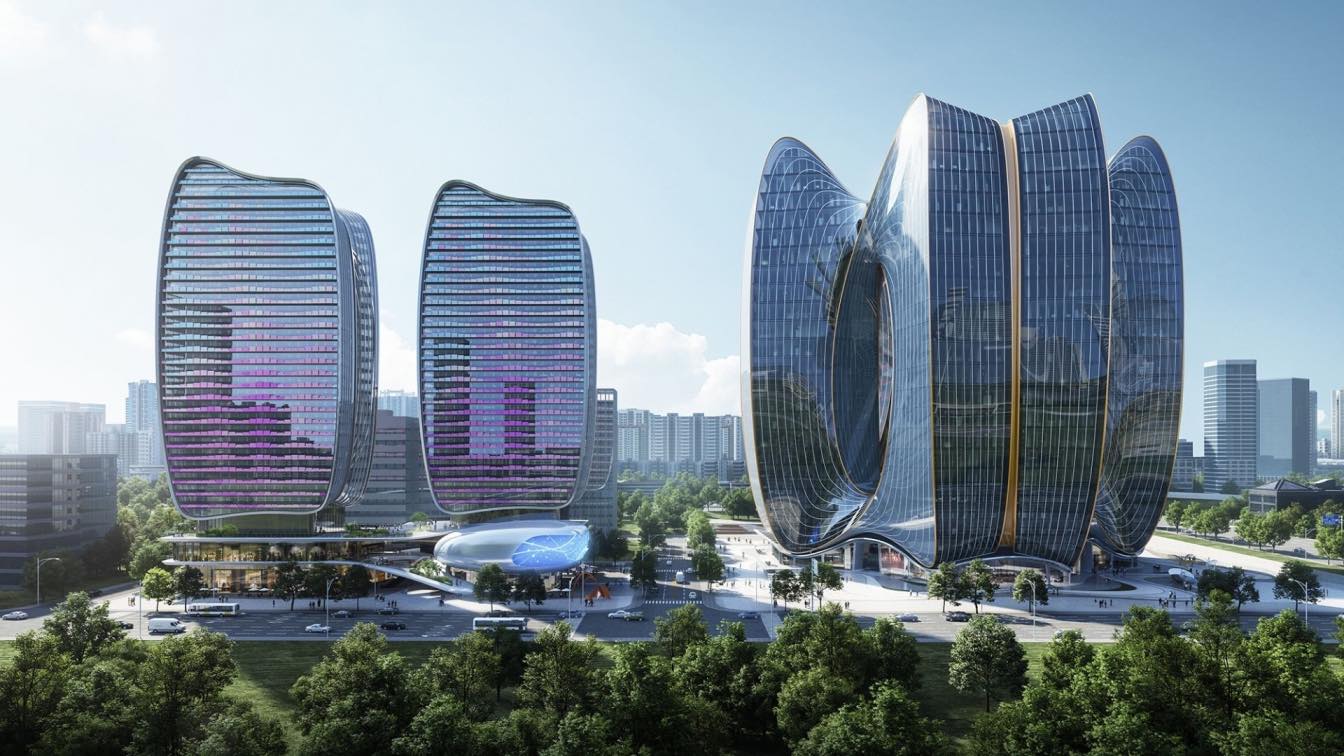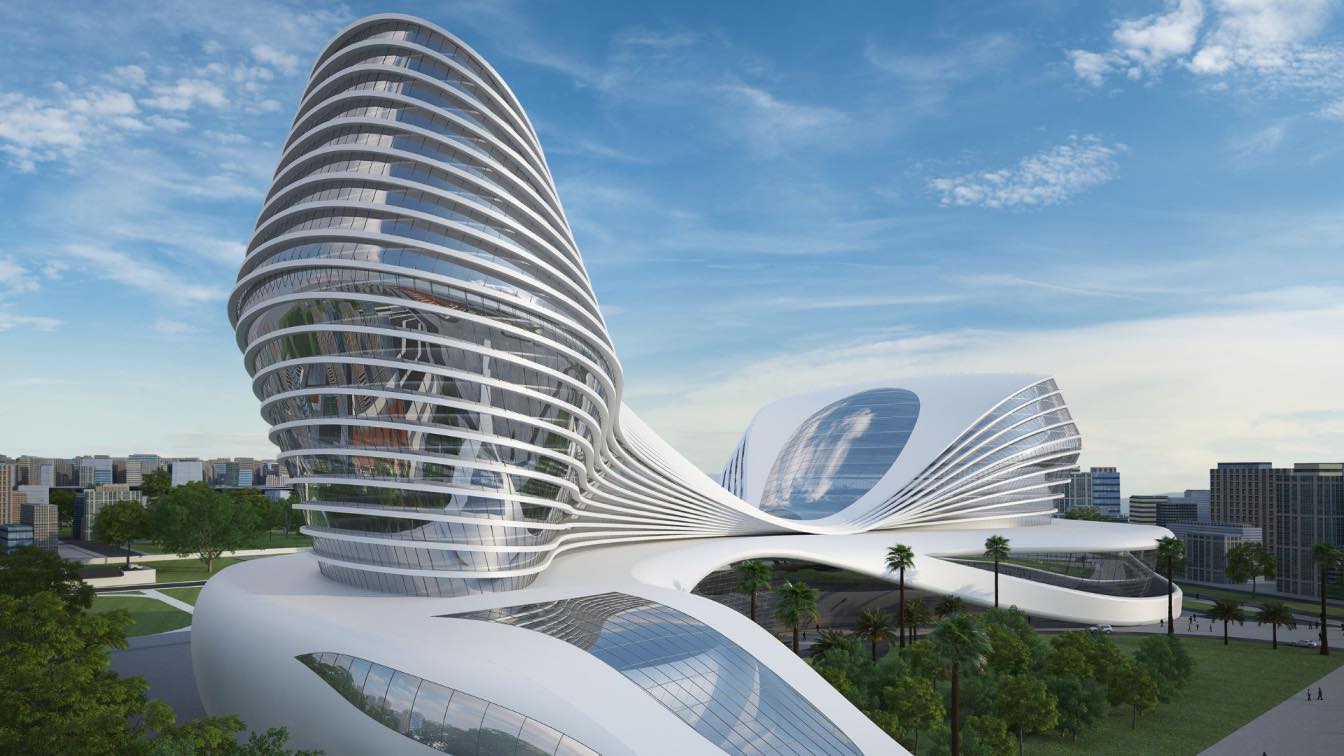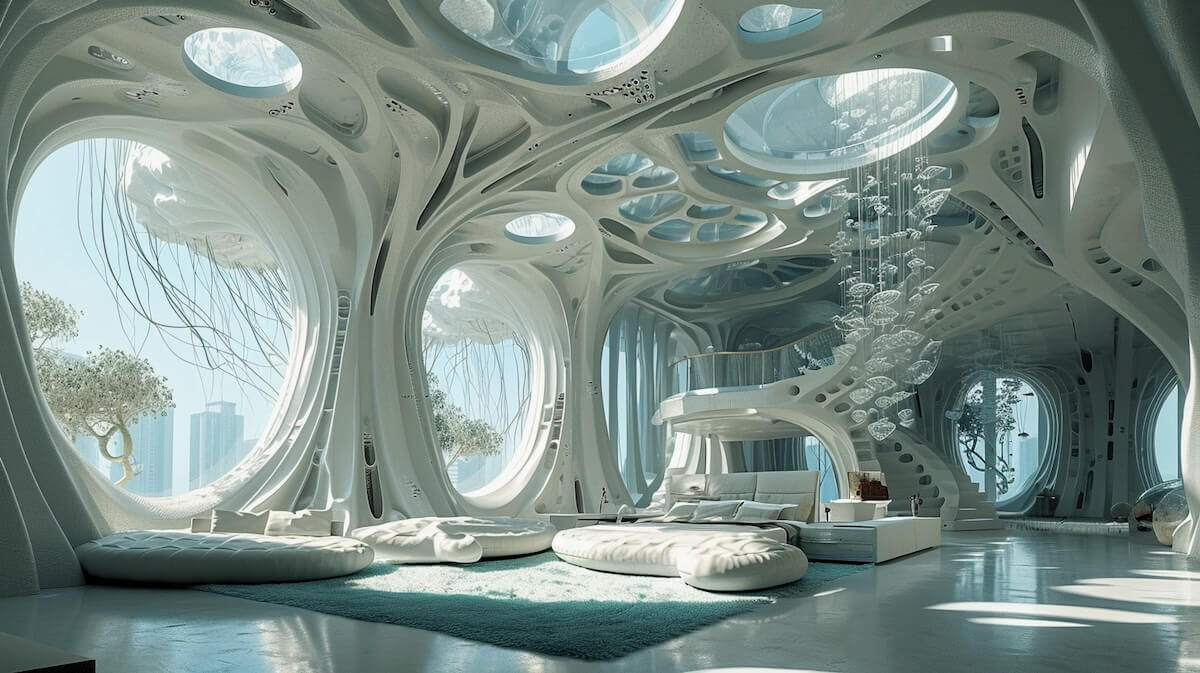Vincent Callebaut Architectures: The mobility of the future will be more diverse, smarter, more shared, cleaner and greener. Cities must again be there for people, not cars, protecting the environment.
The fact that the transport sector is globally responsible for the largest share of CO2 emissions in the world, 24%, and that each motorist spends an average of 90 hours a year in traffic jams shows that things cannot continue like this. 52% of mobility in the world's major cities is still done by car.
To develop a multimodal public transport offer, where shared use replaces ownership, our team of architects, assisted by AI, imagined 5 prototypes of soft and collective vehicles campaigning for peaceful and ecological mobility on land, in the air and on the water.
Their common point: ergonomic architectures with a biomimetic design, dedicated to renewable energies (solar, biohydrogen, green micro-algae), and mixing biobased materials (cross laminated timber and engineered bamboo) with recycled materials (recycled aluminum and fiberglass).
It is the interdisciplinarity of our modes of transport that will allow us to build a resilient and sustainable ecosystem of mobility.
PROTOTYPE 1 - TIMBER eCAR

It is the end of heavy steel SUVs, giving way to wooden, agile, and autonomous city cars. The adoption by the European Parliament of the ban on the sale of thermal propulsion vehicles from 2035 poses many economic challenges and ecological issues.
The objective is, by 2030, to reduce CO2 emissions by 55% compared to 1990, then to aim for climate neutrality in 2050, as provided for in the Green Plan for Europe (EU Green Plan).
Both electric, solar, automated, and made mostly of engineered wood, as CLT or engineered bamboo, these prototypes and their sustainable life cycle could become the greenest concept cars yet to be adopted by the entire automobile industry.
It is the interdisciplinarity of our modes of transport that will allow us to build a resilient and sustainable ecosystem of mobility.
PROTOTYPE 2 – TIMBER eBIKE

Aerodynamic geometry, simplified transmission, integrated cockpits, axleless, hubless and spokeless wheels, the sport, road, mountain or city bikes are revolutionizing our daily lives!
The bike is lighter with new hybrid structures, half in cross-laminated wood and half in graphene which has very good conductivity, conducive to incorporating even more artificial intelligence and connectivity.
In town, bicycles free up traffic lanes, limit pollution, and they are shared in geolocated self-service. Pedaling remains a way to stay healthy, but also, for governments, to make a real public health policy, by reducing cardiovascular diseases and problems related to obesity.
Everyone on the bike!
PROTOTYPE 3 – TIMBER eSHUTTLE

In the world of tomorrow, the space given to cars will not be as large as it is today. And on the main axes, more and more lanes are gradually giving way to the installation of autonomous shuttles capable of interlocking and being able to be connected to each other, thus creating kinds of buses without drivers.
If only to make the round trip between home and work, a driver spends an average of 50 minutes a day with his hands on his steering wheel. The promise of the connected and autonomous shuttle, loaded with sensors and computerized, is safety, energy and time savings, tranquility, and entertainment.
In the form of connected shuttles, the transport of tomorrow, a true hybridization between the individual car and the public transport, will be more ergonomic, open to the outside and specially equipped to accommodate a dozen travelers while respecting health rules. In the era of post-Covid viruses and climate change, our means of transport (private and public) are necessarily becoming more sustainable and more personalized.
We imagine building hybrid shuttles from bio-based materials such as CLT, integrating renewable energies in the solar cowlings, as well as batteries capable of being recharged on dedicated dynamic induction routes. Dynamic induction charging hints at a future where the road could supply electricity to the vehicles that travel along it. The driver would then have an electric car capable of recharging while driving, reducing the need for high-capacity batteries, and charging stations.
PROTOTYPE 4 – TIMBER eVTOL

Vertical take-off and landing (VTOL) aircraft is a variety of flying vehicle that uses electric or hydrogen power to hover, take off, and land vertically.
Most air transport projects of this type are limited to a small number of individuals and are confined to individual vehicles or flying taxis. Soon, the goal is to move beyond public transport, supporting many passengers, between 10 and 20 people, at fixed times on urban lines. The concept is to reduce travel times in the city or between cities, while reducing the pressure on public transport on the ground to alleviate road traffic.
To ensure their energy autonomy and provide them with low-carbon modes of propulsion, hydrogen and electricity could be a solution by storing them in terminals. It is above all the take-off of a flying vehicle that is polluting. To be truly greener than a land vehicle and have a climate benefit, the flying bus must cover a relatively long distance and carry enough passengers. Another solution could also be to use them for freight and urban logistics.
We are therefore mainly interested in the potential of large-scale flying buses with regional goals. For this, the technological challenges for flight, energy production, the creation of ground infrastructures, the organization of airspace and the handling of passengers are in full research and development studies.
PROTOTYPE 5 – TIMBER HYDROFOIL

To increase the speed of boats and reduce their fuel consumption, hydrofoils boats help prevent loss of speed by removing friction and wave drag from the hull, raising it and keeping it in balance. out of the water, thanks to the lift of a set of profiled and submerged wings called foils.
Offshore racing, sport catamarans, or simply intercity passenger boats, foils are making more and more watercraft fly. Will their design decarbonize maritime and river transport and accelerate its ecological transition? The objective is to offer passengers peaceful navigation, without jolts above the waves, and to use the equivalent of 0.1 kWh of electricity per passenger/km to design ships that are more ecological than an electric bus.
To relieve traffic congestion in coastal and river towns while reducing the carbon footprint of our travels, the challenge for architects today is to succeed in designing more rational electric flying boats. But also boats that are more virtuous in their life cycle, in terms of greenhouse gas emissions. Self-sufficient boats and producing the energy they need daily via solar panels, wind turbines, and tidal turbines. Boats that consume less when sailing thanks to optimized hydrodynamic hulls and foils. Boats designed with biobased and/or recycled materials that are less dependent on fossil fuels and designed from the start so that they can be completely deconstructed and recycled at the end of their life cycle.

















